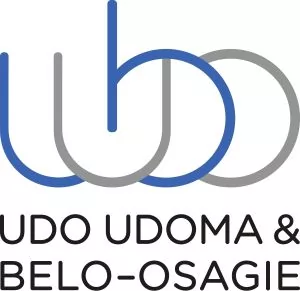- within Energy and Natural Resources topic(s)
- in United States
- in United States
- with readers working within the Healthcare and Media & Information industries
- within Insurance, Corporate/Commercial Law and Tax topic(s)
Introduction
In the mining and extractive industry, the potential return on investment often intersects with the rights of local landowners and communities. From the early stages of exploration to the grant of mining leases and the operationalisation of the sites, questions surrounding land ownership, community consent, and compensation are not only legal but also deeply social and ethical and potentially have an economic impact. Navigating these issues requires an understanding of Nigeria's legal framework, particularly the Nigerian Minerals and Mining Act, 2007 ("Mining Act"), and the practical realities across mining sites in Nigeria.
Who Owns the Land?
As contained in the introductory part of this article, the principal law for mineral resource governance in Nigeria is the Mining Act. Section 1 of the Mining Act vests the entire property in and control of all minerals found in, under or upon any land in Nigeria, its contiguous continental shelf and all rivers, streams and watercourses throughout Nigeria, in the Federal Government of Nigeria, for and on behalf of the Nigerian people. Invariably, while individuals or communities may hold rights to the surface land, the minerals beneath it are the exclusive property of the state.
Furthermore, the legal Latin principle "quicquid plantatur solo, solo cedit' which means "whatever is affixed to the soil belongs to the soil," is a principle that is recognised under the Land Use Act, Cap L5, Laws of the Federation 2004. This principle is inapplicable to the exploitation of mineral resources, as the use of land for mining purposes is deemed to be an overriding public interest.
Accordingly, there is a distinction between surface rights and mineral rights. It also means that a mining company, once granted a valid licence by the Mining Cadastre Office (MCO), would need to acquire surface rights to the land covered by the mineral title from the landowners (typically communities or families), as the surface rights are not granted automatically by the grant of the mineral title.
Consent before Bulldozers
Before a mineral title is granted, Section 100 of the Mining Act requires that notice of application shall be given in the prescribed manner to the landowners or occupiers and their consent obtained before the license is granted; otherwise, the license may be granted with the exclusion of the private land in question. This is to ensure that the landowner's interests are considered when granting the license. Additionally, mineral titleholders must submit an Environmental Protection and Rehabilitation Plan (EPRP) under Sections 118 - 120 of the Mining Act, which includes a social component that anticipates potential disruptions to the communities where the mining activities is being carried out.
Many communities are unaware that exploration or mining activities are licensed on their lands until bulldozers arrive. This is illegal conduct, as the law supports the issuance of necessary notice, consultation, and consent. However, weak enforcement and low literacy among landowners often leave communities sidelined in early decisions.1
Compensation under the Mining Act
Section 107 of the Mining Act provides that the holder of a mining lease shall pay compensation to land users or owners for any disturbance of the surface rights and any damage to the surface of the land on which the mining exploration has been or is being carried on. In addition, the holder of a mineral title is expected to pay for any crop, economic tree, building or work damaged, removed or destroyed by the holder of the mining title or by any of its agents or servants, compensation for the damage, removal or destruction of the crop, economic tree, building or work.
Unfortunately, the Act does not stipulate a uniform method for calculating compensation, leaving much to discretion, negotiation, or litigation. While Regulation 12 of the Minerals and Mining Regulations, 2011 ("Mining Regulations"), provides some procedural guidance, it falls short of offering concrete valuation models.
In some instances, different branches of the same family have approached mining companies with conflicting claims to compensation, each contending they are the rightful landowners entitling them to compensation. This gap in a uniform compensation calculation model has led to many disputes, stalling compensation payments and impacting mining operations.
The Community Development Agreement
FootnoteTo guarantee compensation and community development, the Mining Act requires holders of a Mining Lease, Small-scale mining Lease, or Quarry Lease to conclude a Community Development Agreement ("CDA") or other such agreement with the host community where the operations are to be conducted before the commencement of any development activity within the lease area that will ensure the transfer of social and economic benefits to the community. The CDA will outline commitments in the host communities' education, healthcare, infrastructure, and economic empowerment.
Despite this, many CDAs are merely superficial. Communities are often not meaningfully consulted, and the agreements sometimes lack enforceability. This is compounded by power asymmetries within the communities, language barriers, and the absence of legal or technical advisors for the communities during negotiations. As such, CDAs risk becoming token documents without actual value.
Case Laws on the need for compensation.
Several judicial decisions have affirmed the right of communities to compensation, even in the face of overriding public interest. In the age-long case of AMOS & ORS v. SPDC LTD & ANOR (1977) LPELR-24892(SC), the Supreme Court held as follows:
"Any person prospecting or mining shall pay the owner or occupier of private land such sums as may be fair and reasonable compensation for any disturbance of the surface rights of such owner or occupier and for any damage done to the surface of the land upon which his prospecting or mining is being or has been carried out, and shall in addition pay to the owner of any crops, economic trees, buildings or works damaged, removed, or destroyed by him or any agent or servant of his compensation for such damage, removal or destruction..."
More recently, in OLATEJU v. COMMISSIONER FOR LANDS & HOUSING, KWARA STATE & ORS (2024) LPELR-62589(SC), the Supreme Court, per Honourable Justice John Inyang Okoro, held as follows:
"From the provisions of Sections 28(1), (2)(b) and 29 of the Land Use Act and Section 44(1) of the 1999 Constitution (as altered), evidence of prompt payment of compensation to the owners of the land by the acquiring authority is a sine qua non for a valid compulsory acquisition of land."
The Court emphasised that failure to pay compensation violates constitutional guarantees under Section 44(1) of the 1999 Constitution (as amended).
Recommendations
In order to mitigate issues around compensation in the mining industry, it is important that the following measures be adopted:
- Community Legal Aid: Providing communities with legal knowledge and representation during licensing and CDA negotiations can enhance the balance of power.
- Compensation Valuation Standards: Nigeria will benefit from implementing clear and transparent guidelines for evaluating compensation claims, inspired by international best practices, including the World Bank's Environmental and Social Standards (ESS 5).
- Monitoring and Enforcement: The adoption of a field monitoring and enforcement protocol by regulators such as the MCO and the Ministry of Solid Mineral Development will enhance compliance with CDA provisions, compensation payments, and environmental standards.
- Alternative Dispute Resolution (ADR): Special ADR mechanisms should be instituted by the Federal Government for mining disputes to fast-track resolutions and reduce friction between operators and communities2 .
- Recognition of Customary Rights: it is critical to implement reforms that integrate customary land rights into the formal mining governance framework to prevent dispossession and enhance inclusivity.3 .
Conclusion
The transition from applying mineral titles to actual operations encounters a mix of optimism and scepticism. Although the mining laws strive to balance governmental control over mineral resources, private sector investments, and the rights and welfare of communities, effective implementation frequently fails to achieve the desired equilibrium. Closing this gap necessitates legal reforms, empowering communities, and ensuring accountability from industry operators and stakeholders.
Footnotes
1. Global Rights Nigeria, Community Consent in Nigeria's Extractive Sector (2021) https://www.globalrights.org accessed 18 May 2025
2. Nigeria Extractive Industries Transparency Initiative (NEITI), Audit Reports on the Solid Minerals Sector https://neiti.gov.ng accessed 18 May 2025
3. Centre for Social Justice, Policy Brief on Mining and Customary Land Tenure in Nigeria https://csj-ng.org accessed 18 May 2025
The content of this article is intended to provide a general guide to the subject matter. Specialist advice should be sought about your specific circumstances.





